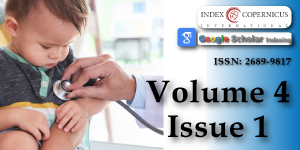Predictors of mortality in neonatal sepsis in a resource-limited setting
Main Article Content
Abstract
Introduction: Sepsis remains a major cause of death in neonatal period. Although significant advances in diagnosis, therapeutic and prevention strategies have been noted, sepsis remains a common concern in clinical practice especially in low-resource countries. The aim of this study was to determine the predictors of mortality in neonatal sepsis in Lubumbashi city (Democratic Republic of Congo).
Methods: The records of newborns with sepsis managed in Neonatal Intensive Care Units in two University Hospitals between November 2019 and October 2020 were studied. Binary and multiple logistic regressions have been used to observe the association between independent variables and dependent variable.
Results: A total of 162 cases of neonatal sepsis were reviewed. The mortality rate of neonatal sepsis was 21% of babies admitted. Very low birth weight (< 1500 grams) and primiparity were significantly associated with mortality in neonatal sepsis (AOR = 12.66; 95% CI 2.40 to 66.86; p = 0.003 and AOR = 3.35; 95% Cl 1.31 to 8.59; p = 0.012, respectively).
Conclusion: The mortality rate of neonatal sepsis was 21%. Very low birth weight and primiparity were significantly associated with mortality in neonatal sepsis.
Article Details
Copyright (c) 2021 Nyenga AM, et al.

This work is licensed under a Creative Commons Attribution 4.0 International License.
Shane AL, Sánchez PJ, Stoll BJ. Neonatal sepsis. Lancet 2017; 390: 1770-1780. PubMed: https://pubmed.ncbi.nlm.nih.gov/28434651/
Pek JH, Gan MY, Yap BJ, Seethor STT, Greenberg RG, et al. Contemporary trends in global mortality of sepsis among young infants less than 90 days old: protocol for a systematic review and meta-analysis. BMJ Open. 2020; 10: e038815. PubMed: https://pubmed.ncbi.nlm.nih.gov/32737098/
Shane AL, Stoll BJ. Neonatal sepsis: progress towards improved outcomes. J Infect. 2014; 68: S24–32. PubMed: https://pubmed.ncbi.nlm.nih.gov/24140138/
Cortese F, Scicchitano P, Gesualdo M, Filaninno A, De Giorgi E, et al. Early and Late Infections in Newborns: Where Do We Stand? A Review. Pediatr Neonatol. 2016; 57: 265-273. PubMed: https://pubmed.ncbi.nlm.nih.gov/26750406/
Bohanon FJ, Nunez Lopez O, Adhikari D, Mehta HB, Rojas-Khalil Y, et al. Race, Income and Insurance Status Affect Neonatal Sepsis Mortality and Healthcare Resource Utilization. Pediatr Infect Dis J. 2018; 37: e178-e184. PubMed: https://www.ncbi.nlm.nih.gov/pmc/articles/PMC5953763/
Nyenga AM, Mukuku O, Kabamba Mutombo A, Luboya ON, Wembonyama SO. Epidémiologie de la septicémie néonatale à Lubumbashi, République démocratique du Congo. J Med Public Health Policy Res. 2021; 1: 6-13. Disponible sur: http://pugoma.com/index.php/JMPHPR/article/view/40
UN Inter-agency Group for Child Mortality Estimation. Levels and Trends in Child Mortality: 2020 Report. United Nations Children’s Fund (UNICEF), World Health Organization (WHO), World Bank Group, and United Nations Population Division; 2020. https://www.un.org/development/desa/pd/news/levels-and-trends-child-mortality-2020-report
Agnche Z, Yeshita HY, Gonete KA. Neonatal Sepsis and Its Associated Factors Among Neonates Admitted to Neonatal Intensive Care Units in Primary Hospitals in Central Gondar Zone, Northwest Ethiopia, 2019. Infect Drug Resist. 2020; 13: 3957–3967. PubMed: https://pubmed.ncbi.nlm.nih.gov/33177846/
Getabelew A, Aman M, Fantaye E, Yeheyis T. Prevalence of neonatal sepsis and associated factors among neonates in neonatal intensive care unit at selected governmental hospitals in Shashemene Town, Oromia Regional State, Ethiopia, 2017. Int J Pediatr. 2018; 2018. PubMed: https://pubmed.ncbi.nlm.nih.gov/30174698/
Nyenga AM, Malonda BN, Abdala AK, Assumani AN, Mukuku O, et al. Trends in Neonatal Mortality in Lubumbashi (Democratic Republic of Congo) from 2011 to 2018. Clin Pediatri. 2019; 2: 1017.
Kayom VO, Mugalu J, Kakuru A, Kiguli S, Karamagi C. Burden, and factors associated with clinical neonatal sepsis in urban Uganda: a community cohort study. BMC Pediatr. 2018; 18: 355.
World Health Organisation and UNICEF. Handbook: IMCI integrated management of childhood illness. Geneva: WHO; 2005. PubMed: https://www.ncbi.nlm.nih.gov/pmc/articles/PMC2083332/
Sabeeh Jumah D. Predictors of mortality outcome in neonatal sepsis. Med J Basrah Univers. 2007; 25: 11-18.
Sharma R, Soni TN, Rathore R, Rajput JS. A prospective study of risk factors of mortality in neonatal sepsis patients. Int J Med Res. 2018; 3: 72‑74.
Ezechukwa CC, Ugochukwu A, Egbuonu I, et al. Risk Factors for neonatal mortality in a regional tertiary hospital in Nigeria. Nigerian J Clin Practice. 2004; 7: 50-52.
Motara F, Ballot DE, Perovic O. Epidemiology of Neonatal Sepsis atJohannesburg Hospital. Southern African J Epidemiol Infect. 2005; 20: 90-93.
Kardana IM. Incidence and factors associated with mortality of neonatal sepsis. Paediatrica Indonesiana. 2011; 51: 144-148.
Ogunlesi TA, Ogunfowora OB. Predictors of mortality in neonatal septicemia in an underresourced setting. J Natl Med Assoc. 2010; 102: 915-922. PubMed: https://pubmed.ncbi.nlm.nih.gov/21053706/
Meshram RM, Gajimwar VS, Bhongade SD. Predictors of mortality in outborns with neonatal sepsis: A prospective observational study. Niger Postgrad Med J. 2019; 26: 216-222. PubMed: https://pubmed.ncbi.nlm.nih.gov/31621661/
Rodriguez M, Canadiani C, Garcia J, Gutiérrez-Castrellón P, Sánchez-Arriaga F. Morbidity and Mortality from neonatal sepsis in a tertiary care level hospital. Salud Publica de Mexico. 2003; 45: 90-95. PubMed: https://pubmed.ncbi.nlm.nih.gov/12736986/
Ahmed Z, Ghafoor T, Waqar T, Ali S, Aziz S, et al. Diagnostics value of C-reactive protein and hematological parameters in neonatal sepsis. J Coll Physician Surg Pak. 2005; 15: 152-156. PubMed: https://pubmed.ncbi.nlm.nih.gov/15808093/
Munan R, Kakudji Y, Nsambi J, Mukuku O, Maleya A, et al. Accouchement chez la primipare à Lubumbashi : pronostic maternel et périnatal. Pan African Med J. 2017; 28: 77. https://www.ncbi.nlm.nih.gov/pmc/articles/PMC5724725/
Kaur J, Kaur K. Obstetric complications: primiparity vs. multiparity. Eur J Experimen Biol. 2012; 2: 1462-1468.
Kakudji PL, Mukuku O, Tambwe AM, et al. Etude du pronostic maternel et périnatal au cours de l’accouchement chez l’adolescente à Lubumbashi, République Démocratique du Congo. Pan African Med J. 2017; 26.
Trotman H, Bell Y, Thame M, Nicholson AM, Barton M. Predictors of poor outcome in neonates with bacterial sepsis admitted to the University Hospital of the West Indies. West Indian Med J. 2006; 55: 80-84. PubMed: https://pubmed.ncbi.nlm.nih.gov/16921699/
Belinda M, Linda R, Jay K, et al. Lois sur l’âge minimum du mariage et prévalence du mariage précoce et de la maternité à l’adolescence: données d’Afrique subsaharienne. Perspectives sexuelles sur la santé sexuelle et génésique. 2016; 29-39.
Valero De Bernabe J, Soriano T, Albaladejo R, Juarranz M, Calle ME, et al. Risk factors for low birth weight: a review. Eur J Obstet Gynecol Reprod Biol. 2004; 116: 3–15. PubMed: https://pubmed.ncbi.nlm.nih.gov/15294360/

